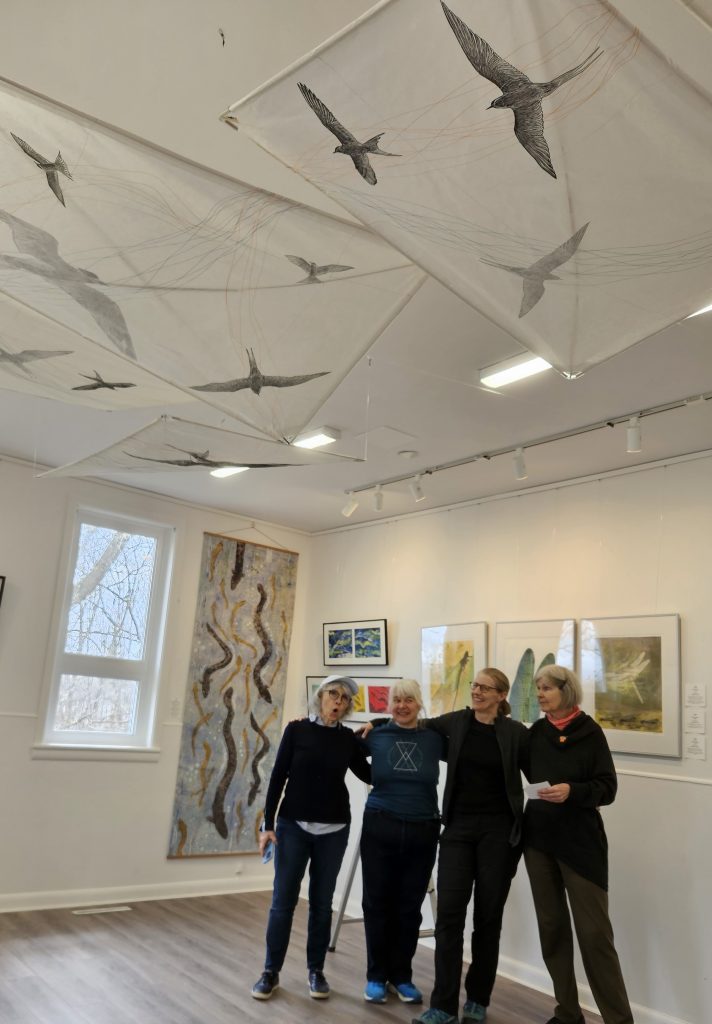In 2022 members of the Ottawa-Gatineau Printmakers Connective began our project on Migration, which we all agreed was a timely and important subject. What surprised us all was the variety of perspectives we took: from the vast animal journeys; migrants fleeing from hostilities or immigrants seeking new possibilities; to more ethereal migrations.

The Hanging Team, Beth Shepherd, Madeleine Rousseau, Shealagh Pope, and Freida Hjartarson , at La Fab April 19th
I will quote here from the news release prepared by the La Fab Sur Mill Arts Centre where are exhibition will be showing from April 21 to June 4, 2023:
Migration has always been part of the human condition. Over history, people have moved to seek new opportunities such as a higher-paying job, a better social or cultural setting, or a chance at an education (Deidre Hierlihy: Margaret with jackrabbit (1937)). Human migration too often, however, is not by choice, but by necessity. As of May 2022, it is estimated that more than 100 million people worldwide have been forcibly displaced as a result of conflict, persecution, human rights violations, and violence. Roughly 42 per cent of those displaced are children (Murray Dineen, The Littlest Migrant). The act of migration can be perilous. Migrants risk their lives, and some never reach safe haven. Many are not welcomed when they do arrive (Lynda Turner, Reverberations).
Migration is also an ongoing, defining pattern for many animal species. Migratory animals move in response to changing seasons or to use different habitats over their life cycle (Patricia Slighte, Aloft). Many of these migrations are awe-inspiring feats of endurance (Shealagh Pope, On the Move). However, changes to the landscape can threaten the ongoing existence of species that depend on movement for their survival (Beth Shepherd, Flow: Recruitment and Escapement).
Canadians living in inner cities are seeing their access to green space gradually diminish as more infrastructure is built where parks and trees used to be. The migration of green space further out of our ever-sprawling built environment is worrisome for the long-term sustainability of these urban neighbourhoods (Madeleine Rousseau, Vivre sans toi?). In addition to figurative works, the exhibition includes conceptual and abstract interpretations that explore how movement between different realms or media can be represented as migrations (Freida Hjartarson, Migration).The artists participating in “Migration” raise timely and important political, economic, ecological, and social issues. This exhibition invites the viewer to consider their own relationship or history with migration. The exhibition also allows viewers to gain a better understanding of the distinctive characteristics and vast potential of print-based art and its role in fostering constructive dialogue around contemporary issues.
Centre des arts La Fab sur Mill Arts Centre
This is a video of the hung show prepared by Richard Austin, Visual Arts director of La Fab Arts Centre.
